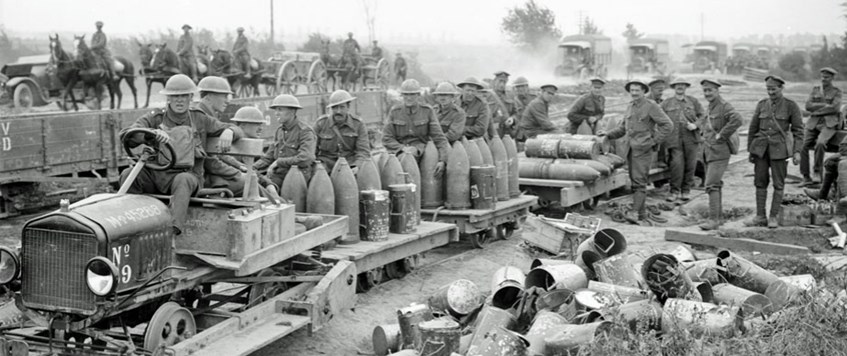
05 Dec
Logistic Support in the BEF a talk by Viv John
Logistic support in the British Expeditionary Force (BEF) during World War I was a massive and complex operation that evolved significantly over the course of the war. Initially unprepared for prolonged conflict, the BEF had to rapidly adapt to the demands of industrialized trench warfare.
Key Points:
- Supply Lines: The BEF relied on an extensive system of railways, roads, horse-drawn transport, and later motor vehicles to move supplies from ports in France (like Le Havre and Boulogne) to the front lines.
- Supplies: Essential items included ammunition, food, water, medical supplies, fuel, uniforms, and construction materials for trenches and fortifications.
- Lines of Communication: The BEF's "Lines of Communication" were managed by the Army Service Corps (ASC), later renamed the Royal Army Service Corps (RASC). They handled everything from rations to spare parts.
- Challenges: Muddy terrain, shell-damaged infrastructure, and German offensives often disrupted logistics. Innovations like light railways and underground stores helped overcome these issues.
- Medical Evacuation: The logistics system also included casualty evacuation chains, moving wounded soldiers from the front to field hospitals and then to base hospitals or back to Britain.
- Scalability: By war’s end, the BEF supported millions of troops, showcasing one of the largest and most effective logistical operations of its time.
In summary, the BEF’s logistical system was crucial to sustaining the war effort, becoming increasingly sophisticated as the scale and duration of the conflict grew.
ZOOM Link: https://us02web.zoom.us/j/84353912816?pwd=X1FdDJFG5rjo2cFE81jTdf0DJrIwl3.1
Fairwater Conservative Club, 61 Ely Rd, Cardiff CF5 2BY
05 Dec 2025 19:30





